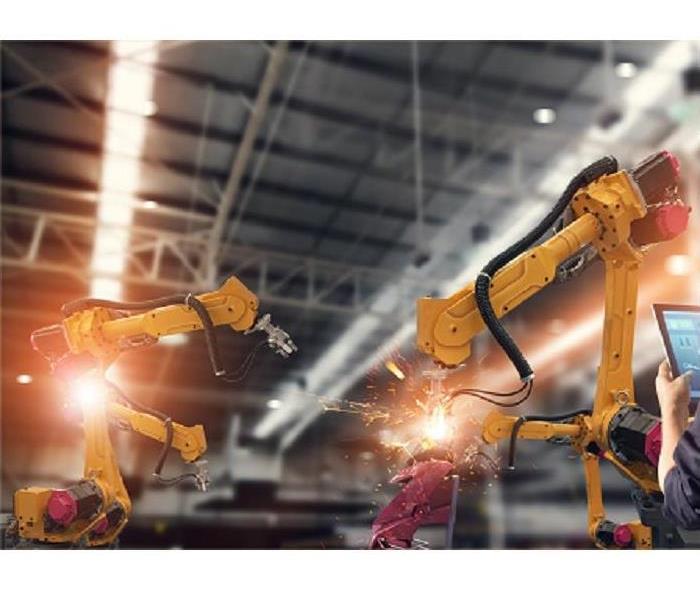How Professionals Dry Water Damaged Factories in Burlington
8/20/2019 (Permalink)
 Water damage can shudder a factory. SERVPRO has the experience and training to get your factory back into the production process.
Water damage can shudder a factory. SERVPRO has the experience and training to get your factory back into the production process.
Standard Equipment Used for Commercial Water Removal and Drying Out of Burlington Factories
An incident involving a deluge of water from a broken pipe or clogged sink can leave your factory in Burlington soaked. Increased water vapor can dampen materials and equipment that avoided the initial onslaught. Because of this possibility, we use sophisticated equipment to locate elevated amounts of moisture.
The different types of equipment we use when mitigating factories and other businesses in Burlington make our commercial water removal methods more efficient. This equipment helps save our customers money and reduces downtime significantly. When we work non-stop at mitigating a disaster's scope, we also decrease the damages experienced.
Helping our customers stabilize their business helps increase the likelihood of a full recovery. Such catastrophes can cause the closure of different stages along a factory's production line, increase the possibilities of slip and fall accidents, and change the interior environment into one more conducive to developing microbial decay and odors.
We use extraction units to pull water up out of carpet and padding, preventing it from spreading out to any additional areas. Powered by the strength of our pump trucks, these crucial pieces of equipment, either in the form of mats or portable units we maneuver by hand, extract low-level standing water. Deeper levels of water, often seen in flooding, deserve our submersible units. Regardless of the depth of water on your factory's floors, we have an answer to the situation.
Because of the vertical nature of walls, we must use equipment that uses a different mechanism to draw out any absorbed water. Air currents pull moisture from the surfaces of walls and ceilings (except where trapped water exists) through normal evaporation. Increasing the rate of evaporation with the use of air movers or box fans angled at the walls forces water located deeper in the materials to come to the surface steadily. Once there, it also ends up in the air as water vapor.
Another one of the equipment pieces that we heavily rely on is the desiccant machines. These strip air passing through them of the water vapor and expels it as dry air. In a standard setup, we direct air currents, so they push dry air across wet surfaces and then push that now-wet air toward a dehumidifier. When possible, we also utilize open windows to decrease the need for dehumidification.
To remove water when walls and ceilings trap it inside building cavities, we drain a series of tiny holes in as inconspicuous an area as possible. When the water drains off, we can hook up machinery that pumps dry air into the enclosed space. Drying such locations prevents mold without needing to dismantle any materials, which can involve repainting surfaces.
SERVPRO of Bristol wants to help make your factory operational again after a disaster. Water removal techniques come into play in much of our restoration work. Call us at (860) 582-3330 when your business needs experts who understand the implications affecting your company. We serve Plainville, New Hartford, and Pleasant Valley, day and night, year-round.
More about Burlington.

 24/7 Emergency Service
24/7 Emergency Service